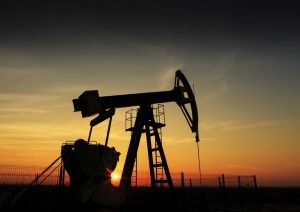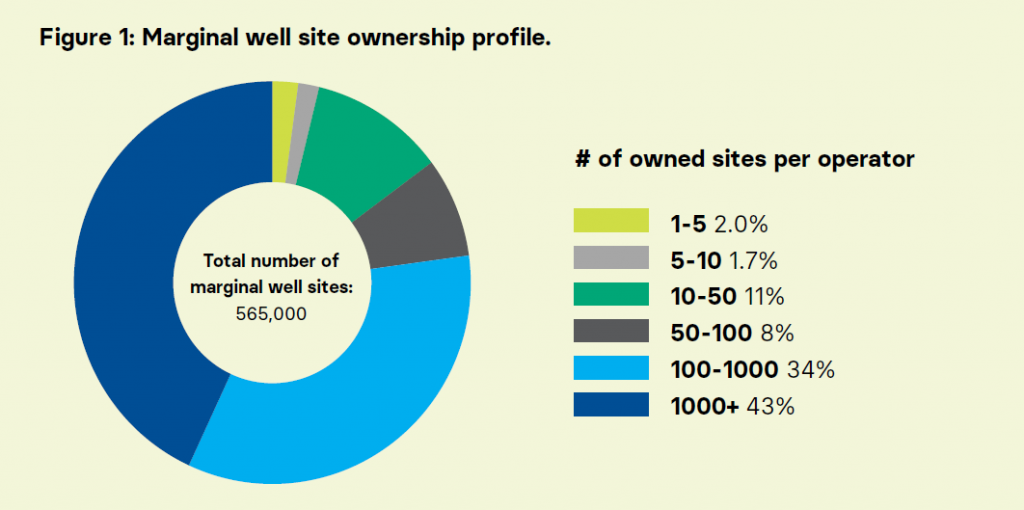
Not-so-marginal wells and the need for strong EPA regulations
The reality is that these wells make up about 80% of all active wells in the U.S, over 560,000 in total. These are not the mom-and-pop operations some portray — rather, the vast majority of marginal wells are owned by large, well-capitalized companies with significant resources to curb wasteful emissions.
As the Environmental Protection Agency readies landmark rules to limit methane pollution from the nation’s existing oil and gas wells, ensuring those standards apply to marginal sites is critical for protecting our climate and the local communities breathing harmful pollution from these wells.
The myth of the mom and pop
Industry trade associations have for years portrayed marginal well owners as universally small businesses or “mom and pops” who cannot afford to take steps to reduce emissions. The data tell another story.
EDF factsheet on marginal wells available here
According to EDF analysis, marginal wells — low-production sites with average combined oil and gas production of less than 15 barrels of oil equivalent per day — are overwhelmingly owned by large companies that have significant resources to deploy commonsense solutions to reduce energy waste and stop pollution. In fact, a small handful of very large companies — just 93 in total, each owning over 1,000 wells — dominate ownership of the nation’s marginal well sites, controlling nearly half of the total.
In all, over 75% of marginal well sites are owned by companies with more than 100 active wells. Meanwhile, small operators with fewer than 10 operating sites control just 4% of these wells nationwide.
Recent reporting from Bloomberg highlighted the nation’s largest owner of marginal wells — a company that owns even more wells than Exxon Mobil — and the threat of outsized emissions from its roughly 69,000 well sites.
Ensuring these kinds of well-resourced firms aren’t given a free pass to pollute is critical for protecting the more than 9 million residents living within a half mile of active oil and gas wells across the country.
Not-so-marginal wells and the need for strong EPA regulations Share on XOutsized emissions from marginal wells
While the nation’s marginal wells make up 80% of all active wells, they account for just 6% of total oil and gas production — and scientific research has repeatedly found that these wells drive an outsized share of the industry’s methane and local air pollution.
These findings play out across several recent peer-reviewed studies focused on low-production well sites:
- For the smallest wells producing 0-1 barrels of oil equivalent per day and contributing just 0.2% and 0.4% of oil and gas production, respectively, research in the Appalachian Basin estimates that wellhead methane escaping from these sites accounts for 11% of the production-related methane emissions in EPA’s Greenhouse Gas Inventory.
- The same research observed that many marginal wells emit as much or more gas than they reported producing. A startling finding in a region where natural gas is the primary product operators aim to sell.
- In West Virginia, researchers found wellhead emissions from marginal wells were 7.5 times larger than EPA estimates, with an average loss rate of 8.8% of production leaked at the wellhead.
- Scientists reported that marginal well sites in Pennsylvania and West Virginia have methane loss rates ranging from 0.35% to 91% of their production.
- Based on preliminary analysis of recent site-level measurements in the Permian Basin, the nation’s largest oil field, nearly half of observable production site methane emissions are from marginal well sites. Additional surveys of the Permian Basin found nearly one in ten super-emitters originated from a marginal producing facility.
Comprehensive regulations
The science is clear that strong policies to reduce oil and gas methane emissions — like those the EPA is readying — must address pollution from marginal wells if we’re to meet our climate ambitions and protect the health of local communities. The large companies that overwhelmingly own these small wells also clearly have the resources to enact commonsense standards and curb pollution.
The International Energy Agency released a report this month reaffirming the need for comprehensive methane rules, noting that emissions can be cut 70% with existing technology, and that a 45% reduction can be achieved at no net cost to companies.
Leading oil and gas producing states like New Mexico (the nation’s No. 2 oil producer) understand how important and pragmatic robust regulations are, which is why it recently stepped up and closed a marginal well loophole in its proposed regulations in order to meet the Lujan Grisham administration’s goal of nation-leading pollution rules.
Now EPA has an opportunity to craft protections that represent the fastest, most cost-effective path to slowing our current rate of climate change. Ensuring the agency’s rules meet the methane moment will depend in large part on how they tackle the outsized emissions from so-called marginal oil and gas wells.











